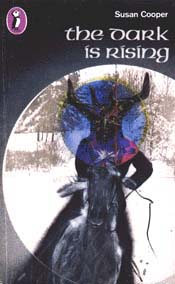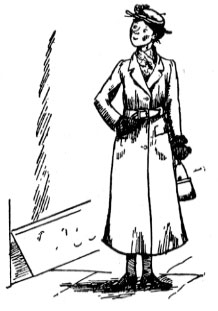Monday 3 November 2014
Sunday 28 September 2014
Swallows and Amazons by Arthur Ransome (1930)
This choice of book prompted at least one member of our group to overcome her phobia of Ransome's books - prompted by her local library's editions of plain hardback editions (without their coloured slip-cases).

The large amount of specialised sailing language (tacking, painters, reefing) for anyone not born and bred on the waters of Lake Coniston can form a barrier to Ransome's books. However, our readers decided (on the whole) that it was worth perservering, and that the story and the characters - as well as Ransome's illustrations - evoked a rich child-centrered world in which imagination and reality weave in and out of one another.
The degree of freedom, independence and responsibility accorded to the children in Swallow and Amazons is remarkable by modern standards. Their father's telegram, permitting them to go on a camping trip on Wild Cat Island in the Lake District reads:
BETTER DROWNED THAN DUFFERS IF NOT DUFFERS WON'T DROWN
Ransome's many fans have been inspired by his books to promote exploring, camping, sailing and a more adventurous approach to life.
While he is best remembered as a children's author, Ransome also spent time as a foreign secretary in Russia over the period of the revolution and even married to Trotsky's secretary, Evgenia Shvelina.
The large amount of specialised sailing language (tacking, painters, reefing) for anyone not born and bred on the waters of Lake Coniston can form a barrier to Ransome's books. However, our readers decided (on the whole) that it was worth perservering, and that the story and the characters - as well as Ransome's illustrations - evoked a rich child-centrered world in which imagination and reality weave in and out of one another.
The degree of freedom, independence and responsibility accorded to the children in Swallow and Amazons is remarkable by modern standards. Their father's telegram, permitting them to go on a camping trip on Wild Cat Island in the Lake District reads:
BETTER DROWNED THAN DUFFERS IF NOT DUFFERS WON'T DROWN
Ransome's many fans have been inspired by his books to promote exploring, camping, sailing and a more adventurous approach to life.
While he is best remembered as a children's author, Ransome also spent time as a foreign secretary in Russia over the period of the revolution and even married to Trotsky's secretary, Evgenia Shvelina.
Ballet Shoes by Noel Streatfeild (1936)

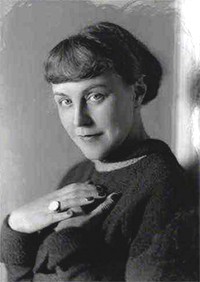


Group members enjoyed the period detail of the story, and those who had not read it before were pleased to discover that there was more to Ballet Shoes than dance lessons and stage school antics.
Crown of Acorns by Catherine Fisher (2010)

Following our group's enjoyment of Susan Cooper's The Dark is Rising, we decided to try another fantasy writer - this time Catherine Fisher.
Fisher, like Cooper, draws on myth and folklore. Several books are based on Welsh myth and landscape (Fisher was born in Newport), while the Oracle Trilogy blends Ancient Egyptian and Greek mythology to great effect.
Crown of Acorns was chosen by our reading group as it is set here in Bath, and centres around John Wood's beautiful eighteenth century streetscape, The Circus. Fisher splits her narrative between a troubled teenager, who has moved to Bath to start a new life, and a fictionalised account of John Wood (the elder) and the building of The Circus in the mid 1700s.

Fisher's writing is vivid and elegant and her other existence as a poet shows through in her prose.
Our group enjoyed this book, with some favouring one storyline and some another but we all agreed that it made us look at the streets and buildings of Bath anew.
The Dark is Rising by Susan Cooper (1973)
The Dark is Rising is the second and best known book in Susan Cooper's Dark is Rising sequence which draws on Arthurian Legend and British folklore.
Cooper studied English at the University of Oxford, one of a group of authors (including Alan Garner, Diana Wynne Jones and Penelope Lively) who were to make a powerful impact on children's literature in the 1960s and 1970s.
This book led to one of the most enthusiatic discussions our group has had, with die-hard Cooper fans and first-time readers all enjoying the story and Cooper's powerful, engaging writing. As with Alan Garner's writing, Cooper conjured up moments of genuine terror in her story and wove a dark, magical tale which is grounded in the English landscape as well as its folklore.
Susan Cooper is still writing today, with her recent book Ghost Hawk being nominated for the Carnegie Award.
Wednesday 17 September 2014
Arthur Ransome: BBC Radio 4, Great Lives
Labi Siffre on Arthur Ransome
Matthew Parris invites his guests to nominate the person who they feel is a great life. This week singer-songwriter Labi Siffre discusses the life and work of Arthur Ransome. Siffre says that the Swallows and Amazons books taught him responsibility for his own actions and also a morality that has influenced and shaped him throughout his life.
Monday 2 June 2014
Noel Streatfeild on "Desert Island Discs", 1976.
Click here to listen to BBC Radio 4 archive recording
Click here to listen to BBC Radio 4 archive recording
Wednesday 7 May 2014
Hans Christian Andersen (1805-1875)

The library staff put special effort into finding full translations of his stories for children, rather than heavily edited versions.
Most of us chose a lightly edited version because it had illustrations by Edward Ardizzone, though the general consensus was that the Penguin/ Puffin Classics editions contained the best translation.
Reading these stories prompted a lot of childhood memories of reading the Ladybird versions of his stories, with their short text and bright illustrations (proving that the narrative pull of his tales was as strong as his elegant turn of phrase). While some readers were defeated by his longer stories, other counted The Snow Queen and the Wild Swans as childhood favourites.

Andersen's retelling of traditional tales and his own original stories have captivated and inspired people for many generations. It's worth getting your hands on a good translation to read his original descriptive, evocative texts.
Mary Poppins by P L Travers (1934)

Most people probably know about Mary Poppins from the 1964 Disney film starring Julie Andrews and Dick van Dyke. A more recent film, Saving Mr Banks starring Tom Hanks and Emma Thompson highlighted the gulf between the "Disney version" and author PL Travers' vision of the story.
Members of the book group all noted the difference between the saccharin Mary Poppins of the Disney movie and the sterner, much vainer Mary Poppins in Travers' books (Mary is for ever admiring her reflection in shop windows), where the children are often reprimanded for mentioning their nanny's magical abilities, and are constantly found wanting in their appearance and behaviour.
Still, there are compensations for her sharp tongue. The children have magical (and sometimes mystical experiences) not normally encountered while walking in the park or visiting friends for afternoon tea.
The episodic nature of the book also appealed to members of the group. Each chapter is almost a self-contained short story ( a structure which influenced Neil Gaiman in writing the Graveyard Book).
If you've only ever seen the film and felt it could do without that extra "spoonful of sugar", it's time to give the original stories a try.
Tuesday 6 May 2014
Once and Future Arthurs - Arthurian Literature for Children
Anna Caughey gives a lecture at the Bodleian Library looking at the varying spectrum of literature about King Arthur written for children.
Anna Caughey gives a lecture at the Bodleian Library looking at the varying spectrum of literature about King Arthur written for children.
Wednesday 2 April 2014
Alf Prøysen and Mrs Pepperpot (1956)


Our tour of Scandinavia continued with a trip to Norway and a look at the Mrs Pepperpot books by Alf Prøysen. Mrs Pepperpot is a little old lady who is prone to unexpectedly shrinking to the size of a pepperpot (though in the original she is called Teskjekjerringa - the teaspoon lady). When she is small Mrs Pepperpot can talk to animals, which often help her to escape scrapes and adventures.
Several members of the reading group were familiar with the Mrs Pepperpot books, but none of us had realised the extent of Prøysen's celebrity in his native Norway. In addition to writing a great many stories, Prøysen was also a folk singer and playwright; a familiar character on Norwegian radio and television.
We all enjoyed our time spent with Mrs Pepperpot and her sometimes grumpy, pancake-guzzling husband. The illustrations by Björn Berg, who also illustrated Astrid Lindgren's Emil books, were an added delight.
Thursday 23 January 2014
Astrid Lindgren
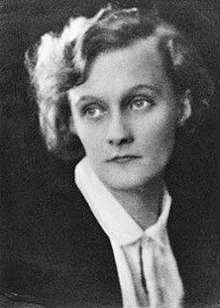
Isabelle unearthed some fascinating background on Lindgren's life, in particular her startling decision in 1926 to bring up her first child as a single mother in Stockholm, rather than marrying the child's father and settling for a respectable life in Vimmerby (near where she was born). Lindgren eventually married in 1931 and had a second child. The Astrid Lindgren website has a host of information and excellent photographs, as well as an overview of Lindgren's writing.
Lingren campaigned for human rights and animal rights and her name has been given to and International prize for children's literature: the Astrid Lindgren Memorial Award.
The book group's reading ranged across Lindgren's gentle writing for younger children, including the Emil stories and The Bullerby Children, to the more fantastical Ronia, the Robber's Daughter and The Brothers Lionheart.




Lisa read The Bullerby Children in its German translation. She had this to say about it:
"It’s about 6 children who live in a tiny hamlet and is told from the point of view of Lisa (good name!). She relates the little ups and downs of a secure childhood – how her parents secretly refurbished a room in their house formerly occupied by an elderly relative and presented the results as a birthday present; how she and the two sisters next door devised a messaging system via their bedroom windows; the birthday party; all 6 children playing ball in the street… It is all charmingly told with a delightful atmosphere of contentment and innocence. The children delight in everything from playing harmless tricks on each other to helping the adults harvest beets to earn a little pocket money (which Lisa uses to buy a kitten).
I would be interested to know if anyone has read this book in English and whether it has an English atmosphere about it. The gentleness of the “adventures” convey an atmosphere of German childhood that I have detected in German-authored books – and wonder if it is something that the translator has brought to the text or whether it is something Lindgren managed to convey (it could be a northern European atmosphere of childhood, for example, or be an atmosphere pertaining to a particular era, I don’t know… and I don’t read Swedish, so I can’t compare it with the original version!)"

Other group members read and enjoyed Ronia, the Robber's Daughter. I am biased about this book: I bought it from the Puffin Book Club when I was about 8 or 9, and it became one of my favourite books. I read it numerous times and spent ages staring at the cover image, wishing I could be Ronia and have all her adventures in the forest.


However, with an impartial opinion, Jenny had this to say:
"I have finished Ronia and thoroughly enjoyed it. I read and re-read the Pippi Longstocking series when I was little and have always seen her as the ultimate feminist icon. She is feisty and independent and not afraid to be herself... I was curious about Ronia but also a bit nervous as to whether she would compare to Pippi. I'm glad to say they are equals!
I found all the characters to be compelling... It was very well paced and packed a lot in... I liked the introspective moments where the characters tried to make sense of their feelings and thoughts.
The focus on nature and the seasons reminded me of Moominland Midwinter... The way death was dealt with was interesting... Scandinavian children's fiction seems not to shy away from serious issues, even with young children. There is death and danger (the harpies, etc) and we must face them head on, rather than shy away or deny them altogether..."
There are, and have been, whole books to be written on Astrid Lindgren, her life and her works and her influence on Scandinavian society, so I will stop this post here.
Overall, the view of the book group was that Pippi is excellent, but there is more to Astrid Lindgren's work that is worth exploring.
The Ruby in the Smoke by Philip Pullman (1985)
For our December book we turned to a Dickensian story in the form of The Ruby in the Smoke by Philip Pullman.
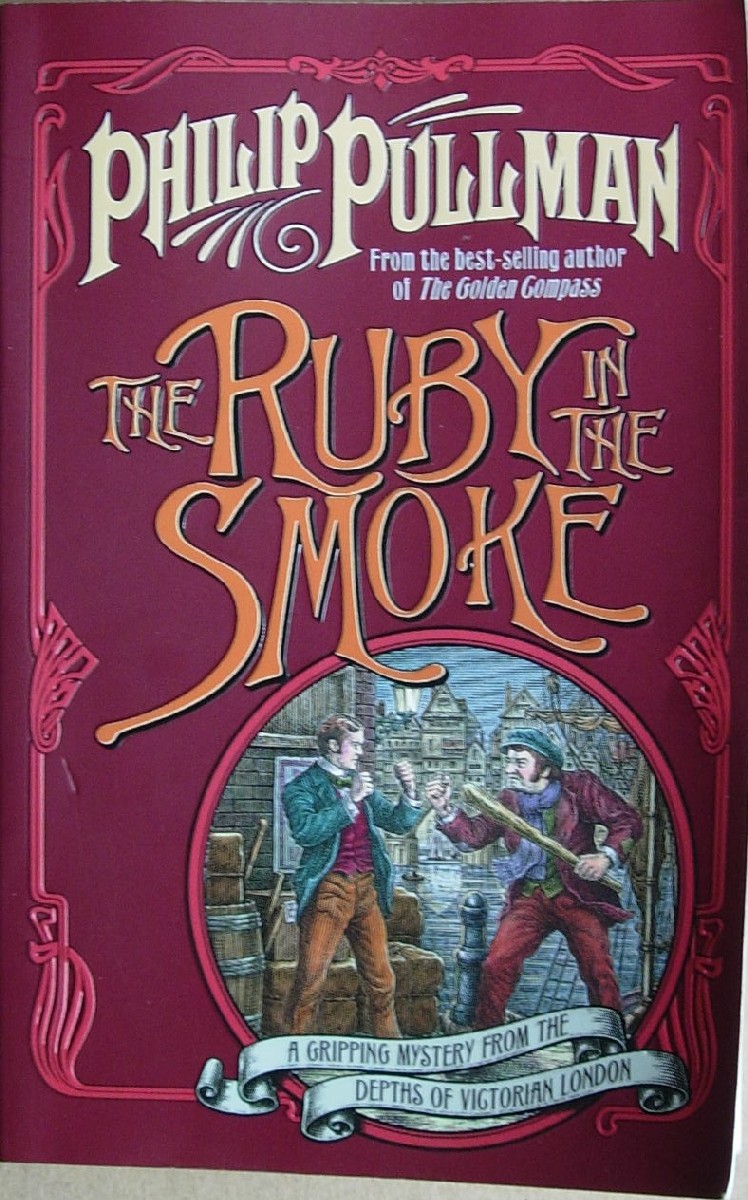
Sally is as strong and as capable a female central character as you're likely to meet in a children's book.
Go here to read the opening paragraph, and see how skillfully Pullman hooks in his readers...
The first two books of the series were adapted by the BBC, with The Ruby in the Smoke airing back in 2006. Starring Billie Piper, it also featured a young Matt Smith as Jim.
This book was enjoyed by everyone in the group. Some of us re-read it with pleasure, while new readers found it gripping and moved on to the next books in the the series. Readers compared the books to Charles Dickens, Anthony Trollope and Arthur Conan Doyle, while Isabelle noted the strong reference to Wilkie Collins' The Moonstone.
Although the plot is deliberately melodramatic and Pullman's lingering teacher's habit of informing his readers about hidden truths and injustices sometimes shows through, he is such an excellent storyteller, and his characters so likable (and despicable) that you can't help being swept along by the narrative.
Perfect fireside reading.
Tuesday 14 January 2014
Scandinavian Children's Literature
What the Scandinavians Know about Children's Literature
First broadcast: BBC Radio 4, 26 Mar 2012
Duration:28 minutes
From the super-human strength of Pippy Longstocking by Swedish author Astrid Lindgren to the strange Finnish animals dreamt up by Tove Jansson in the Moomin stories, and the anarchic Wild Baby created by Barbro Lindgren and Eva Eriksson, Scandinavian children's literature 'punches above its weight' in terms of worldwide sales. Why is that, and why does it have a particularly unique voice?
It began with probably the best known storyteller for children - Hans Christian Andersen - and continued with the work of Elsa Beskow, the Swedish Beatrix Potter. It's still alive today in the books of authors like Gro Dahle.
According to Professor Maria Nikolajeva, a senior editor for the Oxford Encyclopaedia of Children's Literature, Scandinavian books are not rooted in the world of fantasy, like other children's stories, but are often grounded in a slightly skewed reality in which the childlike characters exhibit 'magical' talents. She claims that the Scandinavian culture of respect for the child, the history of the region and those long winters have all had a profound effect on the character of its literature.
Subscribe to:
Posts (Atom)

